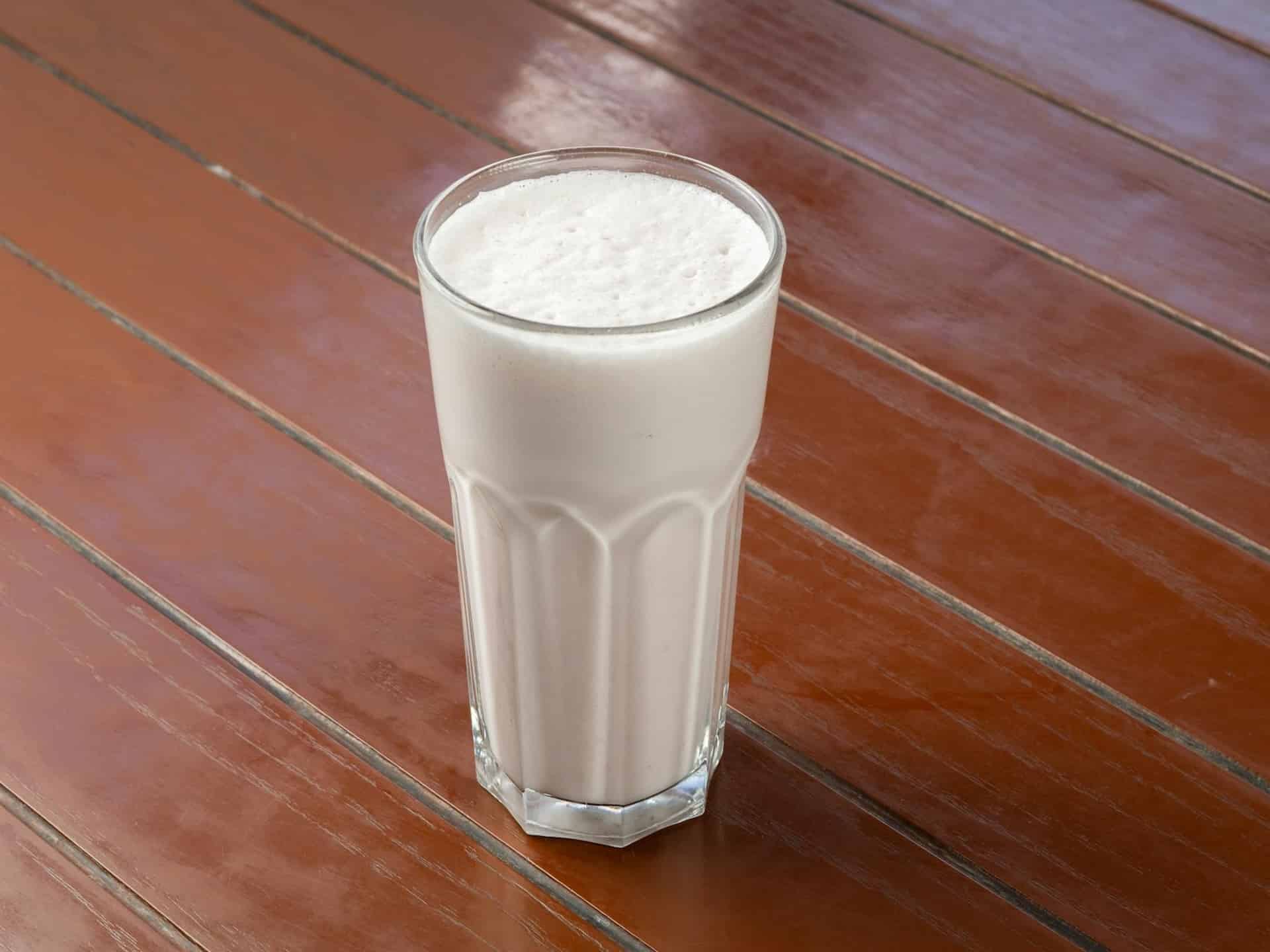
In recent years, the anti-inflammatory diet in menopause has become one of the star topics at conferences of dietitians-nutritionists and gynecologists. It is no wonder, since menopause and postmenopause, understood as the stage of life in which a healthy woman stops menstruating permanently, covers many more years of life than her fertile stage.
Changes in metabolic profile in menopause
At this stage the woman’s body changes due to changes in the metabolic profile. It is the consequence in turn of the cessation of ovarian function and the consequent decrease in the secretion of estrogens and progesterone. All this biological whirlwind translates into a decrease in lean mass (muscle and bone mass).
At the same time, increases fat mass in approximately 450 grams per year, during the 10 years of transition between menopause and postmenopause. «Muscle and bone mass consume a lot of energy to maintain itself. Fat mass does not. As there is less muscle, we begin to accumulate fat,» explains Iva Marques, patron of the Spanish Academy of Nutrition and Dietetics, graduate in Nutrition and doctor in Pharmacy. .
Do you gain weight during menopause?
The answer is yes in most cases. And we have the cause in the change in the metabolic profile in menopause, or, what is the same, that our body begins to work at lower revolutions. “There is a physiological tendency to lower energy expenditure because there is less and less lean mass”says the expert.
Far from being a sentence from which there is no escape, menopause is a good time to become familiar with the regular physical activity. “This physical activity will help us, first of all, to burn calories; and secondly, to prevent the physiological decrease in lean mass,” says Marques.
Practicing sports also produces feel-good hormones, such as endorphins or dopamine, which will help us modulate the mood changes that are usually associated with this stage of life.
Inflammation: how it manifests itself in menopause
The hormonal changes of menopause produce four physiological changes that result in increased inflammation and the risk of metabolic syndrome:
- Increase in blood lipids, such as triglycerides or cholesterol.
- Increased blood glucose.
- Increase in blood pressure
- Increase in abdominal fat measured by waist circumference
In this metabolic context, the inflammatory response of the body. This inflammatory whirlwind affects blood vessels, organs and tissues in general. If maintained at high levels for a long time, this silent injury gives rise to different chronic degenerative diseases such as cardiovascular pathology, dyslipidemia, glucose intolerance, diabetes… This explains why it is advisable to eat anti-inflammatory foods during menopause.
Keys to an anti-inflammatory diet in menopause
There is no magic wand that will eliminate this inflammatory state, but there are two very powerful tools to manage it. One, we have already seen, is regular physical activity, where strength work cannot be missing to counteract the loss of muscle mass. The second tool is to approach an anti-inflammatory diet during menopause.
Marques establishes four changes or steps to implement this new diet during menopause.
Change 1: more plant-based foods
- Increase the consumption of foods of plant originespecially vegetables, nuts, legumes and whole grains.
- Increasing fiber intake from these foods produces greater satiety which, in turn, helps control intake and counteract weight gain.
- Fiber also has a very important regulatory role in blood glucose and the microbiome. “Therefore, it also contributes to regulating dyslipidemia (the increase in lipids, such as cholesterol, in the blood) and all bodily functions,” says Marques.
- These foods also have a high content of phytochemicals and minerals essential for the normal functioning of defenses and maintain the balance of the body.
Change 2: omega 3 in an anti-inflammatory diet
- Increase the omega 3 consumptionthe famous anti-inflammatory fatty acids, eating more fatty fish, nuts or olive oil, for linolenic acid, the first precursor of the omega 3 line.
- Eat at least 3-4 servings of fish a week. Two of them are fatty fish (sardines, anchovies, salmon, trout, horse mackerel, tuna…).
Change 3: calcium and vitamin D
- Increase or reinforce the calcium and vitamin D consumptionessential for bone health. Calcium is present in dairy products and foods such as cruciferous vegetables, cabbages in general and canned fish.
- As for dairy products, it is advisable to increase them and, if they are replaced with vegetable drinks, they should be enriched with calcium and vitamin D.
Change 4: dine before
- Dinner time is key. According to numerous studies, “people who eat dinner before nine at night have lower inflammation markers than those who eat dinner after that time. This has been demonstrated in adults and children.”
- Try to eat dinner at least 2 hours before going to bed. We are talking about dinners between 7:30 p.m. and 9 p.m.

Nutritional recommendations: foods for menopause
- Unsalted nuts
- olive oil
- legumes
- Fish in general, and blue fish in particular (also called fatty fish)
- Vegetables in general, and cruciferous vegetables, such as broccoli, cauliflower and other cabbages, in particular.
- Dairy in general, and if they are totally or partially replaced by vegetable drinks, ensure that they are enriched with calcium and D.
Prohibited foods during menopause
Iva Marques does not agree with this very ‘clickbait’ concept of prohibiting foods or citing lists of prohibited foods as if they were pure poison. “Food has a hedonic or pleasurable value that we cannot ignore. We are holistic beings, eating goes beyond mere nutrition. What we must keep in mind is that some foods are not so healthy and, therefore, their consumption should be occasional,” argues the expert.
Among those foods that are not recommended during menopause and that should only be consumed from time to time are the following:
- Fatty meat derivatives: chorizo, fuet, mortadella… “They contain a lot of salt and saturated fat.”
- Precooked foods: lasagna, pizzas,… These are foods with a very high energy density, a very high amount of sugar or salt and a generally very high fat content.
- Sugary drinks, due to their high content of free sugars
- Sweets and general pastries. “Here we must distinguish between industrial pastries and traditional Mediterranean pastries characteristic of each region. That is part of our culture and there is no reason to renounce it outright. It is enough to consume it in moderation and in reasonable quantities,” clarifies the expert.
Mediterranean diet in menopause
The most recent scientific evidence supports the convenience of adopting a Mediterranean diet pattern at this stage of life. “Adherence to a Mediterranean diet not only promotes health and inflammation indicators. It also has a huge amount of antioxidants and bioactive substances that contribute to reducing inflammatory mediators and oxidative stress,» he explains.
The fruits and vegetables provided by the Mediterranean diet provide key nutrients to improve bone formation and reduce the rate of bone wear, typical of menopause. Not only because of the vitamins and phytochemicals. It also contains very important minerals in all stages of life, such as magnesium, manganese, selenium, zinc or calcium.
Weekly menu on an anti-inflammatory diet for menopause
Marques gives us a menu proposal with foods good for menopause.
| Day 1 | Day 2 | Day 3 | Day 4 | Day 5 | |
| Breakfast | Toasted whole wheat bread with olive oil fresh cheese apple |
Kefir with kiwi and oat flakes | Scrambled eggs with whole wheat bread Pear |
Avocado toast with smoked salmon | Oatmeal porridge with red fruits |
| lunch | A handful of almonds with pumpkin seeds | Banana and a handful of walnuts | A handful of almonds with pumpkin seeds | Liquid yogurt and apple | Tuna, red onion and tomato sandwich |
| meal | Sautéed borage Stewed chickpeas with sweet potato and carrot Cottage cheese with walnuts | Cod in sauce with peppers, onion and tomato and baked potato. Orange | Brown rice with vegetables and sautéed tofu | Grilled cuttlefish with broccoli and sweet potato | Arugula salad with fresh cheese Lentils with cabbage |
| dinner | Arugula and lamb’s lettuce salad with drained canned sardines Pear |
Zucchini and onion omelette Yogurt with sesame seeds | Pumpkin cream Grilled salmon with confit onion Natural yogurt | Sautéed poultry breasts with seasonal mushrooms | Escalibada toasts with smoked cod Yogurt with walnuts |
The ALDI Council
The hormonal changes of menopause not only produce changes in the distribution of body fat. It also increases cardiovascular risk. If you haven’t practiced physical activity regularly, now is a good time to start.

Iva Marquis. Patron of the Spanish Academy of Nutrition and Dietetics. Graduate in Nutrition and doctor in Pharmacy. Professor of Nutrition and Bromatology at the Faculty of Health and Sports Sciences of the University of Zaragoza. Researcher at the IA2 Agri-Food Institute of Aragon, forming part of the Research Group “Analysis and evaluation of food safety”. Director of the University Expert Degree “Nutrition and feeding of vegetarian and vegan children” at the University of Zaragoza. She has been Editor-in-Chief of the Spanish Journal of Human Nutrition and Dietetics, as well as President of the Spanish Conference of Deans and Directors of Centers that teach the degree in Human Nutrition and Dietetics. She is currently Patron and Honorary Academician of the Spanish Academy of Nutrition and Dietetics, a member of the Portuguese Agency for Evaluation and Accreditation of Higher Education A3ES and of the Scientific Committee of the Association «5 a day». Facebook: @iva.marqueslopes.







